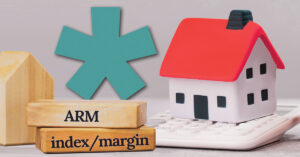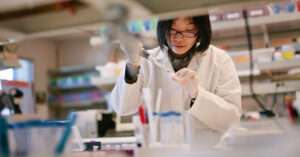Issuance of so-called green bonds, which are backed by mortgages on climate-friendly assets, hit a record $155.5 billion worldwide in 2017. This year, that figure could reach $250 billion to $300 billion, according to research from the Climate Bonds Initiative. A green bond is a generally defined as a debt instrument used to finance projects that have a positive environmental or climate impact.
The growth of green bonds is reflective of efforts from issuers and investment communities to do good by doing well by the environment. The government-sponsored enterprise (GSE) Fannie Mae issued its first green mortgage-backed securities (MBS) some six years ago, backed by its first multifamily green mortgages. In 2017, Fannie Mae issued more than $27.6 billion in single-loan green MBS and another $3.4 billion in green real estate mortgage investment conduits, or REMICs, via Fannie Mae’s Guaranteed Multifamily Structures (GeMS) program — making the GSE one of the largest global issuers of green securities.
These numbers reflect the growing acceptance of green bonds — both as a mortgage financing vehicle for multifamily property owners and as a fixed-income option for investors. That acceptance should put green bonds and mortgages on the radar of every commercial mortgage broker looking for creative financing alternatives for borrowers who want to capitalize on the societal and economic benefits of acquiring, selling or developing energy-efficient, environmentally friendly properties.
Green-mortgage basics
Green MBS and the green multifamily-property mortgage loans backing them work to create financial value by reducing costs for multifamily tenants and the amount of resources needed to operate and maintain properties. According to the U.S. Environmental Protection Agency (EPA), commercial buildings account for the following:
39 percent of total energy use from fuel oil, coal and other energy types;
68 percent of total electricity consumption;
12 percent of total water consumption; and
45 percent of total carbon-dioxide emissions.
Green buildings are helping to conserve these resources through better siting, design, construction, operation, maintenance and removal practices — encompassing the complete building life cycle.
Green mortgage loans are available for acquisition, refinance or supplemental financing of a real estate asset, and include requirements or targets related to the property’s energy or water consumption. A green mortgage also may be available for owners seeking to put energy-generating equipment, such as solar panels, on the property, or for properties with a green-building certification, such as Energy Star or Enterprise Green Communities.
For the broadest appeal to both borrowers and investors, a green mortgage must align as closely as possible to the terms of a non-green mortgage by using the same lender network, and having a similar ease of execution and timeline, while also incorporating the green scope into financing the property — i.e., energy or water efficiency, renewable energy or green-building certification.
The energy audit
An energy audit should be conducted before the green mortgage closes to make certain the scope of any required green-efficiency improvements to the property are known to both the borrower and lender, and that the property is eligible for green financing. A mechanism, such as escrow funds, must be included in the loan terms to ensure all required improvements are made.
Fannie Mae’s Green Rewards mortgage product finances properties that are expected to save at least 25 percent on either annual energy or annual water consumption after the completion of required efficiency improvements. These loans are able to access lower interest rates than a non-green mortgage, additional loan proceeds, and energy and water audits paid for by Fannie Mae.
“ Fannie Mae is continually introducing new features and product enhancements to its green-financing business based on new market conditions and customer feedback. ”
Eligible improvements might include replacing single-pane windows with double-pane windows, replacing energy-inefficient appliances with efficient Energy Star ones, or installing solar panels. Smaller eligible improvements might include installing low-flow water faucets, shower heads and toilets, or replacing incandescent lighting with high-efficiency LED lighting.
Fannie Mae does not require the owner to perform a specific list of improvements. Rather, the owner saves energy and water by selecting from a list of opportunities identified in the audit report. With these improvements completed, property owners are projected to realize cost savings on their utility bills, thus improving cash flow.
Owner and investor demand
c_2018-04_pagitsas_chart.jpgThe demand for green financing has grown exponentially as multifamily owners and developers have seen the bottom-line benefits of green improvements to their existing assets, or constructing their new assets to green-building certification standards.
There were 3,400 apartment units built to Leadership in Energy and Environmental Design (LEED) certification standards in 2008, when LEED was first used by the multifamily sector. That number grew to 44,800 in 2015, an increase of more than 1,200 percent.
From the first green multifamily mortgage financing originated by Fannie Mae in 2012, growth has been incredible. That initial year, a total of four green MBS loans were made, totaling $5.5 million. In 2017, that number had grown to 1,173 green MBS loans valued at $27.6 billion.
Fannie Mae is continually introducing new features and product enhancements to its green-financing business based on new market conditions and customer feedback. Green-mortgage loans have been originated as part of Fannie Mae’s Delegated Underwriting and Servicing (DUS) multifamily financing program, which will mark its 30th anniversary in 2018.
Beyond green MBS
More than $270 billion in Fannie Mae multifamily MBS are now in the securities market, with a robust demand from a community of investors. Green MBS are now part of this multifamily MBS population — attractive to the existing investor base and also providing unique MBS investment opportunities for an environmentally focused investor base.
As the volume of primary-market green MBS increased in 2016 and 2017, Fannie was able to re-securitize a portion of these green MBS into a REMIC structure as part of the GSE’s GeMS program. The REMIC provides a green-investment opportunity for socially responsible investors who might need a greater geographic diversity or block size than a single-loan green MBS can provide. In 2017, Fannie Mae priced its first green multifamily REMIC tranches under the GeMS program with the FNA 2017-M2 deal.
Later in the year, Fannie issued a green REMIC backed entirely by green MBS collateral, with the FNA 2017-M10 deal. In December 2017, the GSE priced its final multifamily GeMS REMIC for 2017, a $1.6 billion issuance with $1.1 billion in green-only tranches. All classes of that FNA 2017-M15 deal are guaranteed by Fannie Mae with respect to the full and timely payment of interest and principal. By the end of 2017, Fannie Mae had issued $3.4 billion in structured green REMICs.
• • •
Incorporating green-building principles into property improvements enhances the overall quality of the existing multifamily housing stock, benefiting property owners, tenants, lenders and investors. While the market is still young by most standards, there is now more interest, commitment and growth in Fannie’s green products than ever before, attracting not only traditional commercial MBS investors, but also funds solely devoted to environmentally conscious investments. Fannie Mae’s green MBS financings represent a solid investment opportunity, and a lot of multifamily debt remains available to go green.
Author
-
Chrissa Pagitsas is the director of Fannie Mae’s multifamily green-financing business. She oversees the growth of its portfolio, valued at $32 billion as of year-end 2017. She is a leader and industry expert in sustainable finance, creating a road map for advancements in green fixed-income securities, national standards for tracking and measuring energy and water performance, and transforming how multifamily mortgage originators and developers finance properties.



